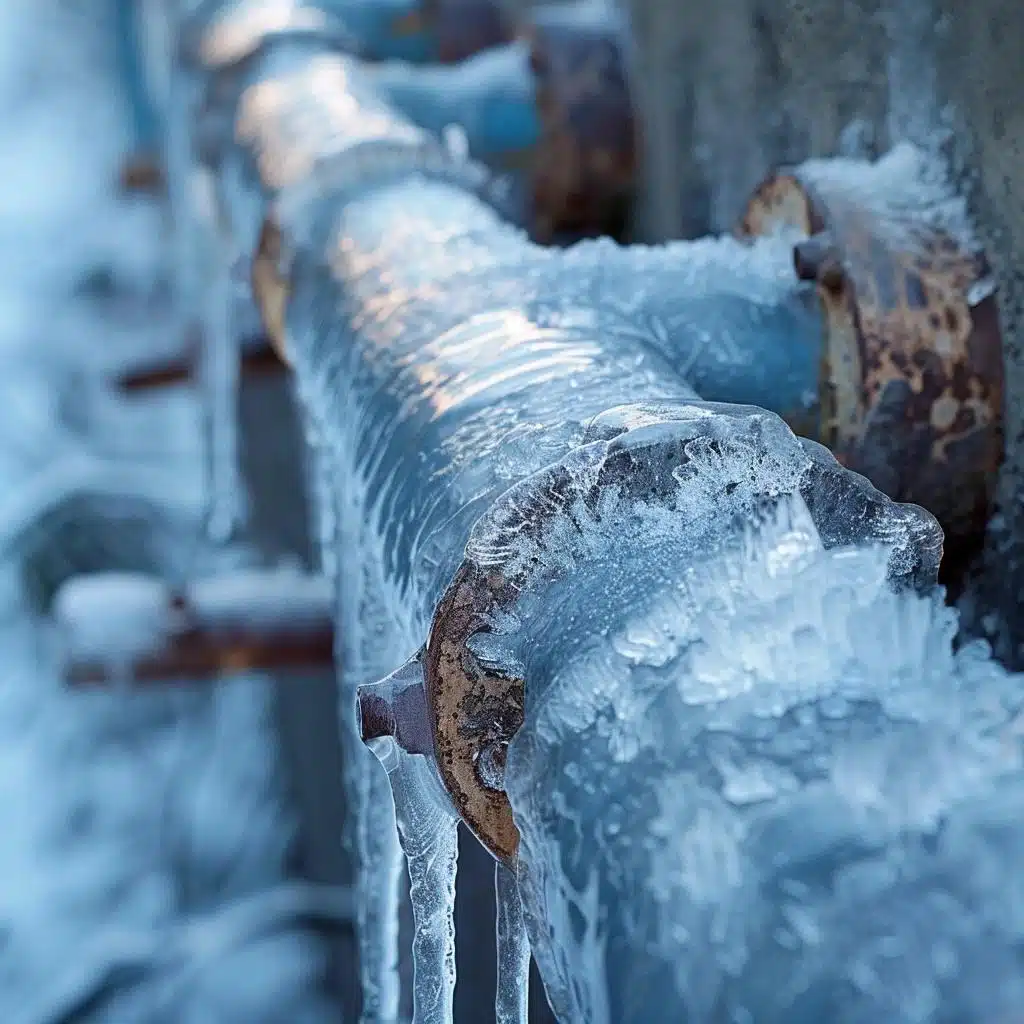Tips to Protect Pipes from Freezing: Specialist Guidance
Tips to Protect Pipes from Freezing: Specialist Guidance
Blog Article
What are your ideas regarding Prevent Frozen Pipes ?

Winter can ruin your pipes, specifically by freezing pipelines. Below's exactly how to avoid it from occurring and what to do if it does.
Introduction
As temperatures drop, the threat of icy pipes increases, possibly bring about pricey repair services and water damage. Understanding just how to avoid icy pipes is essential for homeowners in chilly climates.
Recognizing Frozen Pipelines
What triggers pipes to freeze?
Pipelines freeze when exposed to temperature levels listed below 32 ° F (0 ° C) for extended durations. As water inside the pipelines freezes, it broadens, taxing the pipe walls and potentially triggering them to break.
Risks and damages
Icy pipes can cause water supply disruptions, building damages, and costly fixings. Ruptured pipelines can flooding homes and cause substantial structural damages.
Indications of Frozen Pipeline
Determining icy pipes early can avoid them from rupturing.
Just how to recognize frozen pipes
Seek lowered water circulation from taps, unusual smells or sounds from pipelines, and noticeable frost on exposed pipes.
Avoidance Tips
Insulating at risk pipelines
Wrap pipelines in insulation sleeves or utilize warmth tape to shield them from freezing temperature levels. Focus on pipes in unheated or exterior locations of the home.
Heating strategies
Keep indoor spaces sufficiently heated, particularly locations with pipes. Open closet doors to permit cozy air to distribute around pipelines under sinks.
Safeguarding Exterior Plumbing
Garden pipes and exterior taps
Disconnect and drain garden pipes prior to winter. Install frost-proof spigots or cover outside taps with protected caps.
What to Do If Your Pipelines Freeze
Immediate activities to take
If you believe icy pipelines, maintain taps available to soothe stress as the ice thaws. Use a hairdryer or towels soaked in warm water to thaw pipelines slowly.
Long-Term Solutions
Architectural modifications
Take into consideration rerouting pipelines far from outside wall surfaces or unheated areas. Add extra insulation to attic rooms, cellars, and crawl spaces.
Upgrading insulation
Purchase top notch insulation for pipes, attics, and wall surfaces. Appropriate insulation helps keep regular temperature levels and lowers the threat of frozen pipes.
Verdict
Stopping frozen pipes calls for positive measures and quick feedbacks. By comprehending the reasons, signs, and preventive measures, home owners can protect their plumbing during winter.
Helpful Tips to Prevent Frozen Pipes this Winter
UNDERSTANDING THE BASICS: WHY PIPES FREEZE AND WHY IT’S A PROBLEM
Water freezing inside pipes is common during the winter months, but understanding why pipes freeze, and the potential problems it can cause is crucial in preventing such incidents. This section will delve into the basics of why pipes freeze and the associated problems that may arise.
THE SCIENCE BEHIND FROZEN PIPES
When water reaches freezing temperatures, it undergoes a physical transformation and solidifies into ice. This expansion of water as it freezes is the primary reason pipes can burst. As the water inside the pipe freezes, it expands, creating immense pressure on the walls. If the pressure becomes too great, the pipe can crack or rupture, leading to leaks and water damage.
FACTORS THAT CONTRIBUTE TO PIPE FREEZING
Low Temperatures: Extremely cold weather, especially below freezing, increases the risk of pipes freezing. Uninsulated or Poorly Insulated Pipes: Pipes located in unheated areas, such as basements, crawl spaces, or attics, are more prone to freezing. Insufficient insulation or lack of insulation altogether exacerbates the problem. Exterior Wall Exposure: Pipes running along exterior walls are susceptible to freezing as they encounter colder temperatures outside. Lack of Heating or Temperature Regulation: Inadequate heating or inconsistent temperature control in your home can contribute to frozen pipes. PROBLEMS CAUSED BY FROZEN PIPES
- Pipe Bursting: As mentioned earlier, the expansion of water as it freezes can cause pipes to burst, resulting in significant water damage.
- Water Damage: When pipes burst, it can lead to flooding and water damage to your property, including walls, ceilings, flooring, and personal belongings.
- Structural Damage: Prolonged exposure to water from burst pipes can compromise the structural integrity of your home, leading to costly repairs.
- Mold and Mildew Growth: Excess moisture from water damage can create a favorable environment for mold and mildew growth, posing health risks to occupants.
- Disrupted Water Supply: Frozen pipes can also result in a complete or partial loss of water supply until the issue is resolved.
WHY CERTAIN PIPES ARE MORE PRONE TO FREEZING
- Location: Pipes located in unheated or poorly insulated areas, such as basements, crawl spaces, attics, or exterior walls, are at higher risk of freezing.
- Exterior Pipes: Outdoor pipes, such as those used for irrigation or exposed plumbing, are particularly vulnerable to freezing as they are directly exposed to the elements.
- Supply Lines: Pipes that carry water from the main water supply into your home, including the main water line, are critical to protect as freezing in these lines can affect your entire plumbing system.
- Underground Pipes: Pipes buried underground, such as those connected to sprinkler systems or outdoor faucets, can be susceptible to freezing if not properly insulated.
https://busybusy.com/blog/helpful-tips-to-prevent-frozen-pipes-this-winter/

I'm just very occupied with How to Prevent Your Pipes From Freezing and I'm hoping you appreciated the blog entry. Liked our blog posting? Please quickly share it. Let others check it out. Thank you so much for going through it.
View More Report this page